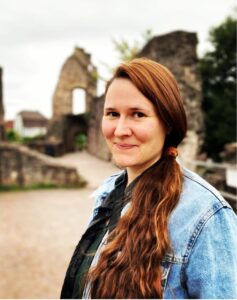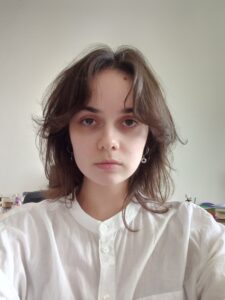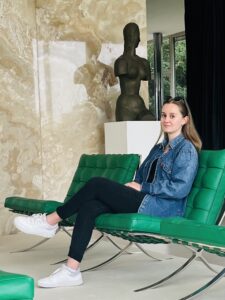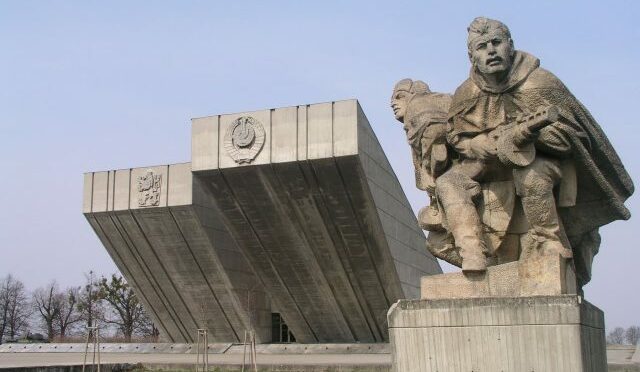« Visualiser la résistance : le graffiti itinérant “Las Cuchas Tienen la Razón” et la présence fantomatique des Colombiens victimes de disparition forcée en Europe »
Axe 3 – Objets, traces, mises en carte : espaces au quotidien
 Mes recherches examinent de manière générale comment les acteurs étatiques et non-étatiques, ainsi que les victimes survivantes, négocient les concepts de réparation collective pour les préjudices liés au genre, intersectionnels et relationnels. Je me concentre particulièrement sur les possibilités et les limitations des réparations collectives dans les processus officiels de reconnaissance des victimes. Dans une optique ontologique relationnelle, j’explore la manière dont les cadres de victimisation collective sont construits et contestés dans les discours de la justice transitionnelle et au-delà, particulièrement en lien avec la mémoire territoriale, l’art et la résistance dans le contexte de la paix territoriale dans l’espace urbain colombien. Mon travail est ancré dans les approches critiques, décoloniales, queers et féministes de la justice transitionnelle, des réparations, du genre et des droits humains. Entre 2022 et 2024, j’ai collaboré avec un collectif de chercheuses et un groupe LGBT de Medellín étroitement dans des projets de documentaires participatifs. L’un de ces projets est actuellement en train d’être réédité et devrait être présenté à un festival de films.
Mes recherches examinent de manière générale comment les acteurs étatiques et non-étatiques, ainsi que les victimes survivantes, négocient les concepts de réparation collective pour les préjudices liés au genre, intersectionnels et relationnels. Je me concentre particulièrement sur les possibilités et les limitations des réparations collectives dans les processus officiels de reconnaissance des victimes. Dans une optique ontologique relationnelle, j’explore la manière dont les cadres de victimisation collective sont construits et contestés dans les discours de la justice transitionnelle et au-delà, particulièrement en lien avec la mémoire territoriale, l’art et la résistance dans le contexte de la paix territoriale dans l’espace urbain colombien. Mon travail est ancré dans les approches critiques, décoloniales, queers et féministes de la justice transitionnelle, des réparations, du genre et des droits humains. Entre 2022 et 2024, j’ai collaboré avec un collectif de chercheuses et un groupe LGBT de Medellín étroitement dans des projets de documentaires participatifs. L’un de ces projets est actuellement en train d’être réédité et devrait être présenté à un festival de films.
Durant mon séjour au CEFRES, je vais explorer les dimensions transnationales de l’activisme de la mémoire par l’intermédiaire du graffiti itinérant “Las cuchas tienen la razón”, créé à l’origine par des jeunes graffeurs et des chercheuses à Medellín. Le projet étudie comment cette intervention visuelle, symbole de résistance territoriale et des luttes menées par la jeunesse et les femmes pour la vérité, la justice et des réparations, a été réinterprétée au sein de la diaspora latino-américaine en Europe, notamment à Vienne, à Berlin et à Londres. Pour étudier ces mémoires territoriales véhiculées par le graffiti itinérant, J’adopte une méthodologie exploratoire utilisant la métaphore des fantômes. « L’ethnographie des fantômes » offre un cadre conceptuel pour examiner comment le trauma et l’absence sont inscrites sur les corps et les espaces urbains, en particulier par le biais du muralisme et du graffiti. Ces formes de street art fonctionnent comme des archives vivantes de la résistance, souvent négligée dans l’historiographie et l’ethnographie traditionnelles, mais qui occupe une place centrale dans les pratiques mémorielles populaires. Je compléterai cela par des entretiens semi-structurés menés avec des graffeurs et des chercheuses.
Au CEFRES, je compte contribuer principalement à l’axe de recherche 3. Au cours de mon séjour, je présenterai mes découvertes et diffuserai le documentaire participatif « Women Walking for Truth – Transforming Voices and Territorial Resistance » (2025).
CV
J’ai un master de philosophie (2019) obtenu à l’Université Goethe (Francfort) et un master d’études internationales (« Peace and Conflict Research », 2020) de l’Université technique deDarmstadt. En 2024, j’ai tenu des cours sur les théories féministes, la réparation climatique et les méthodologies basées sur l’art en tant que chargée d’enseignement internationale au Département des sciences politiques et des études globales à l’Université des Andes (Bogotá). En 2025, j’étais chercheuse invitée au Département des études de genre à la London School of Economics et au Département des sciences politiques et sociales de l’Institut universitaire européen (Florence).



